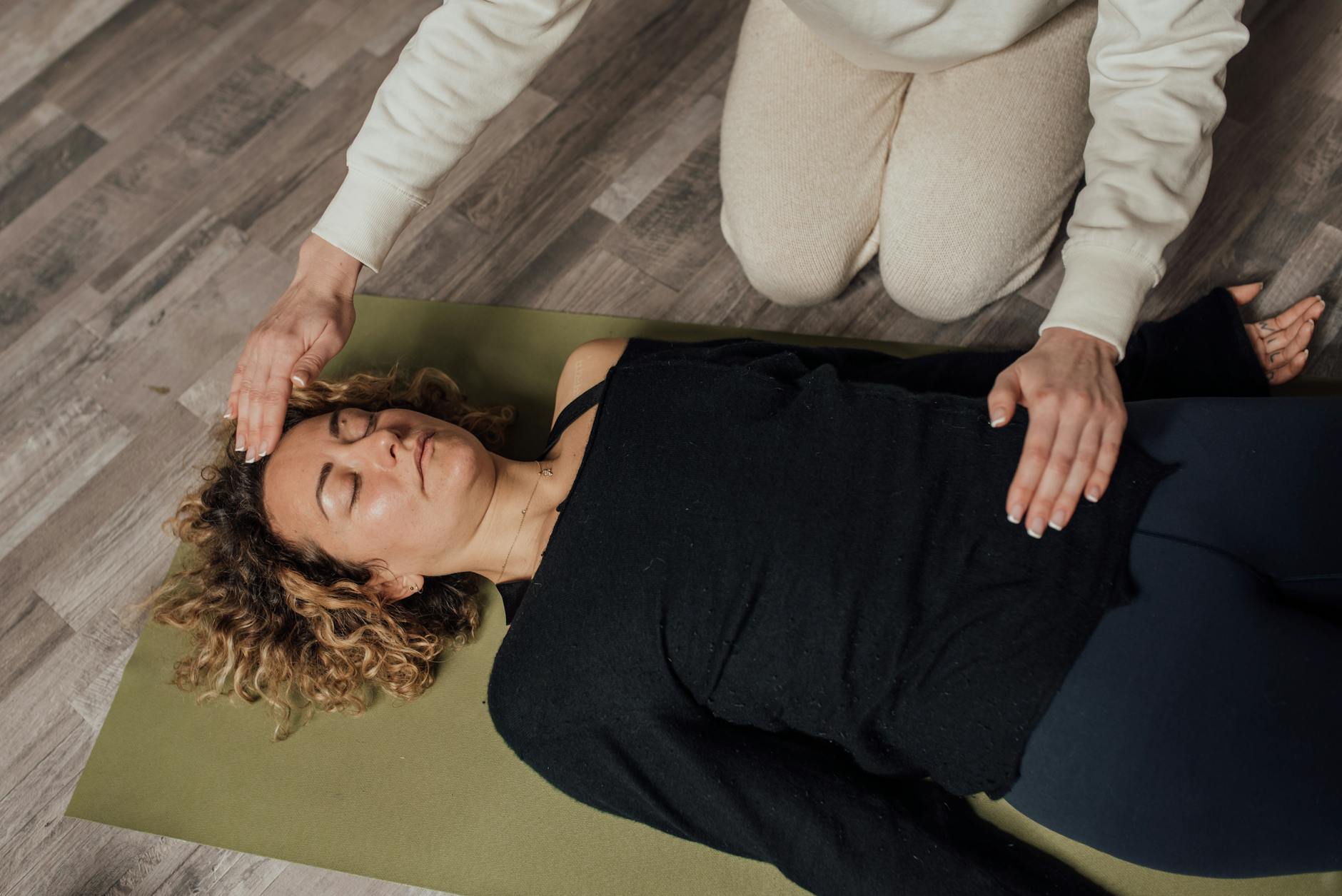
In a world that never seems to slow down, finding inner peace can feel like an impossible task. 🌪️ Stress, anxiety, and constant distractions plague our daily lives, leaving us yearning for a moment of tranquility. But what if there was a way to quiet the noise and find calm amidst the chaos?
Enter meditation – the ancient practice that’s gaining modern popularity for its incredible benefits. 🧘♀️ Whether you’re looking to reduce stress, improve focus, or simply learn to be more present, meditation offers a path to inner harmony. But for beginners, the world of meditation can seem overwhelming. Where do you start? Which technique is right for you?
Fear not! We’ve compiled the Top 5 Meditation Techniques for Beginners to help you embark on your journey to mindfulness. From the foundational practice of mindfulness meditation to the imagination-fueled guided visualization, we’ll explore simple yet powerful techniques that anyone can master. Let’s dive into these transformative practices and discover how they can revolutionize your daily life.
�
Mindfulness Meditation: Foundation for Beginners

A. Understanding the concept of mindfulness
Mindfulness is the practice of being fully present and engaged in the current moment, without judgment. It involves paying attention to your thoughts, feelings, and sensations as they arise, without getting caught up in them or trying to change them. This simple yet powerful concept forms the foundation of mindfulness meditation.
B. Simple mindfulness exercises for daily life
Incorporating mindfulness into your daily routine can be easier than you think. Here are some simple exercises to get started:
�
-
- Mindful breathing: Take a few deep breaths, focusing on the sensation of air entering and leaving your body.
-
- Body scan: Systematically notice each part of your body, from head to toe, without trying to change anything.
-
- Mindful eating: Pay attention to the taste, texture, and aroma of your food during meals.
-
- Mindful walking: Focus on the sensation of your feet touching the ground as you walk.
C. Benefits of practicing mindfulness regularly
Regular mindfulness practice can lead to numerous benefits for both mental and physical well-being:
| Mental Benefits | Physical Benefits |
|---|---|
| Reduced stress and anxiety | Lower blood pressure |
| Improved focus and concentration | Better sleep quality |
| Enhanced emotional regulation | Strengthened immune system |
| Increased self-awareness | Reduced chronic pain |
By cultivating mindfulness, you can develop a greater sense of calm and clarity in your daily life. As you become more adept at observing your thoughts and emotions without judgment, you’ll find it easier to respond to life’s challenges with grace and equanimity.
�
Breathing Meditation: Harnessing the Power of Breath

Basic breathing techniques for relaxation
Breathing meditation is a powerful tool for beginners to cultivate mindfulness and relaxation. Here are some simple yet effective techniques to get started:
�
-
- Diaphragmatic breathing
-
- 4-7-8 breathing
-
- Box breathing
| Technique | Description | Benefits |
|---|---|---|
| Diaphragmatic breathing | Breathe deeply into your belly, expanding it on inhale and contracting on exhale | Reduces stress, improves oxygen flow |
| 4-7-8 breathing | Inhale for 4 counts, hold for 7, exhale for 8 | Promotes relaxation, aids sleep |
| Box breathing | Inhale, hold, exhale, and hold again, each for 4 counts | Enhances focus, reduces anxiety |
Counting breaths to improve focus
Counting breaths is an excellent way to anchor your attention and improve concentration. Start by sitting comfortably and following these steps:
�
-
- Close your eyes and take a few deep breaths
-
- Begin counting each breath cycle (inhale and exhale) from 1 to 10
-
- If you lose count or get distracted, gently return to 1
-
- Repeat for 5-10 minutes
Using breath as an anchor for wandering thoughts
When thoughts inevitably arise during meditation, use your breath as an anchor to maintain focus:
�
-
- Acknowledge the thought without judgment
-
- Gently redirect your attention to your breath
-
- Focus on the physical sensations of breathing
-
- If thoughts persist, try labeling them (e.g., “thinking,” “planning”) before returning to the breath
By practicing these techniques regularly, you’ll develop a stronger ability to stay present and manage stress effectively. Next, we’ll explore the Body Scan Meditation technique, which further enhances body awareness and relaxation.
�
Body Scan Meditation: Cultivating Body Awareness

Step-by-step guide to body scan meditation
�
-
- Find a comfortable position (lying down or sitting)
-
- Close your eyes and take a few deep breaths
-
- Start focusing on your toes, then move up through your body
-
- Notice any sensations without judgment
-
- Gradually relax each body part as you scan upwards
-
- End with a focus on your whole body
Addressing physical tension and stress
Body scan meditation is an effective technique for identifying and releasing physical tension. Here’s how it helps:
�
-
- Increases awareness of stress-holding areas
-
- Promotes muscular relaxation
-
- Reduces overall bodily tension
| Benefit | Description |
|---|---|
| Stress Relief | Helps identify and release tension |
| Pain Management | Improves awareness of pain sources |
| Better Sleep | Relaxes body for improved sleep quality |
Enhancing mind-body connection
Body scan meditation strengthens the link between mind and body, leading to:
�
-
- Improved body awareness
-
- Enhanced emotional regulation
-
- Greater overall well-being
By regularly practicing body scan meditation, beginners can develop a deeper understanding of their physical sensations and mental states. This increased awareness forms a solid foundation for more advanced meditation techniques and contributes to a more balanced, mindful lifestyle. As we explore the next technique, we’ll see how focusing on positive emotions can further enhance our meditation practice.
�
Loving-Kindness Meditation: Nurturing Compassion

Understanding the concept of loving-kindness
Loving-kindness meditation, also known as Metta meditation, is a practice rooted in Buddhist traditions. It focuses on cultivating feelings of love, kindness, and compassion towards oneself and others. This technique involves repeating positive phrases or intentions, gradually expanding the circle of compassion from oneself to loved ones, neutral individuals, and even challenging relationships.
Practicing self-compassion through meditation
Self-compassion is the foundation of loving-kindness meditation. To practice:
�
-
- Find a comfortable position
-
- Close your eyes and take a few deep breaths
-
- Repeat phrases like:
�
-
- “May I be happy”
-
- “May I be healthy”
-
- “May I be safe”
-
- “May I live with ease”
-
- Repeat phrases like:
Extending loving-kindness to others
Once you’ve established self-compassion, extend these feelings to others:
| Target | Example Phrases |
|---|---|
| Loved ones | “May they be happy and healthy” |
| Neutral people | “May they be free from suffering” |
| Difficult individuals | “May they find peace and joy” |
Benefits of cultivating compassion
Practicing loving-kindness meditation offers numerous benefits:
�
-
- Increased empathy and emotional intelligence
-
- Reduced stress and anxiety
-
- Improved relationships and social connections
-
- Enhanced overall well-being and life satisfaction
As you continue to practice loving-kindness meditation, you’ll find it becomes easier to extend compassion to yourself and others in daily life. Next, we’ll explore guided visualization, another powerful technique for beginners seeking relaxation and inner peace.
�
Guided Visualization: Using Imagination for Relaxation

Exploring different visualization scenarios
Guided visualization offers a wide range of scenarios to explore, each designed to promote relaxation and well-being. Some popular options include:
�
-
- Nature scenes: Beaches, forests, mountains
-
- Celestial journeys: Space travel, stargazing
-
- Fantasy worlds: Magical gardens, underwater realms
-
- Personal achievements: Succeeding in goals, overcoming challenges
| Scenario Type | Benefits | Example |
|---|---|---|
| Nature | Reduces stress, promotes calmness | Imagining a serene forest walk |
| Celestial | Expands perspective, inspires awe | Floating among the stars |
| Fantasy | Enhances creativity, boosts mood | Exploring a secret garden |
| Achievement | Builds confidence, motivates | Visualizing job success |
Creating a personal safe space through imagery
Developing a personal safe space is crucial for effective guided visualization. This mental sanctuary should be tailored to your preferences and evoke feelings of security and tranquility. Consider incorporating:
�
-
- Comforting colors and textures
-
- Soothing sounds or music
-
- Familiar objects or symbols
-
- Pleasant scents or aromas
Combining visualization with breathing techniques
Integrating breath work with visualization enhances the overall experience. Try synchronizing your breath with mental imagery:
�
-
- Inhale: Visualize positive energy entering your body
-
- Hold: Imagine the energy spreading throughout
-
- Exhale: Picture stress and tension leaving your body
Tools and resources for guided visualization practice
To support your practice, consider using:
�
-
- Meditation apps with guided visualizations
-
- YouTube channels featuring visualization exercises
-
- Audiobooks focused on guided imagery
-
- Virtual reality experiences for immersive visualization
Remember, consistency is key. Start with short sessions and gradually increase duration as you become more comfortable with the technique.

Embarking on your meditation journey can be transformative, and these five techniques offer an excellent starting point for beginners. From the foundational practice of mindfulness to the compassion-focused loving-kindness meditation, each method provides unique benefits to enhance your mental and emotional well-being.
Remember, there’s no one-size-fits-all approach to meditation. Experiment with these techniques to discover what resonates best with you. As you incorporate meditation into your daily routine, you’ll likely experience reduced stress, improved focus, and a greater sense of inner peace. Start small, be patient with yourself, and enjoy the journey of self-discovery and mindfulness.
